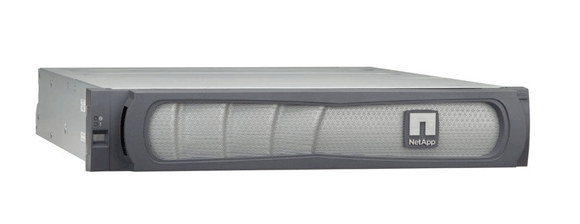How to check Netapp Serial Number. The NetApp filer’s Serial Number (S/N) is stored in a file within the etc directory. You can use the rdfile /etc/serialnum/ command to display the Serial Number (S/N). In NetApp Data ONTAP GX, the file /mroot/etc/serialnum can be read to locate the Serial Number. In NetApp side iSCSI LUNs can be identified by Serial number, or LUN path, or even LUN id. But the same LUNs in ESXi can have the same LUN id, but you can have LUNs with the same LUN id from different systems. Besides that the LUNs in ESXi can only be identified by the identifier ID.
The serial numbers of the Filer (a.k.a. head) power supplies are not reported in the environment status output. You can only retrieve it through physical inspection or using the sysconfig -M command, depending on your Data ONTAP version and platform.
The serial number of each power supply is anyway located on top of the power supply Field Replaceable Unit (FRU). Unplug the power supply, remove the two thumbscrews and physically remove the power supply to view the serial number.
Filers that are in the FAS900 family or newer, and running ONTAP V 6.5.7 or higher, will show the serial number of the PSUs in the head in the sysconfig -M output. However, older hardware and software platforms do not show the serial number of the PSUs in the head in the sysconfig -M output.
Sysconfig -M example:
Filer> sysconfig -MCambridge ielts 6 listening test 1 mp3 free download full.
!System Serial Number!210283722!
!Model Name!FAS980!
!System ID!0101164866!
.
.
.
!Chassis Power Supply!69815!856-851020!C1!
!Chassis Power Supply!69816!856-851020!C1!
!DS14-Mk2-FC-Pwr-Supply!PMN441920021336!34!N/A!!
!DS14-Mk2-FC-Pwr-Supply!PMN441920021324!34!N/A!!

In the example above, the serial numbers of the chassis power supplies will be the number between the second and third exclamation marks, so 69815 and 69816 respectively.
Parameters
- { [-fields<fieldname>, ..]
- If you specify the -fields <fieldname>, .. parameter, the command output also includes the specified field or fields. You can use '-fields ?' to display the fields to specify.
- [-inventory]
- Use this parameter to display inventory information such as serial numbers, asset tags, system identifiers, and model numbers.
- [-messages]
- Use this parameter to display system messages for each node.
- [-instance]}
- If you specify the -instance parameter, the command displays detailed information about all fields.
- [-node{<nodename> local}] - Node
- Selects information for node names that match this parameter value.
- [-owner<text>] - Owner
- Selects nodes that have owner values that match this parameter value.
- [-location<text>] - Location
- Selects nodes at specific physical locations that match this parameter value.
- [-model<text>] - Model
- Selects nodes that have model numbers that match this parameter value.
- [-serialnumber<text>] - Serial Number
- Selects nodes that have serial numbers that match this parameter value.
- [-assettag<text>] - Asset Tag
- Selects nodes that have asset tags that match this parameter value.
- [-uptime{<seconds> [<d> days] <hh>:<mm>[:<ss>]}] - Uptime
- Selects nodes that have uptimes that match this parameter value. This parameter is most useful when used with a range indicator such as less than or greater than, as in:
- [-nvramid<nvramid>] - NVRAM System ID
- Selects nodes that have NVRAM system IDs that match this parameter value.
- [-systemid<text>] - System ID
- Selects nodes that have system IDs that match this parameter value.
- [-vendor<text>] - Vendor
- Selects nodes that have vendor names that match this parameter value.
- [-health{true false}] - Health
- Selects nodes that have health values that match this parameter value. Specify true to display healthy nodes, and false to display unhealthy nodes.
- [-eligibility{true false}] - Eligibility
- Selects nodes that have voting eligibility values that match this parameter value.
- [-epsilon{true false}] - Epsilon (privilege: advanced)
- Selects nodes that have epsilon holding designations that match this parameter value. This is useful to find out which node, if any, in the current cluster has been designated as epsilon. Specify true to display the node holding epsilon, and false to display nodes not holding epsilon.
- [-uuid<UUID>] - UUID (privilege: advanced)
- Selects nodes that have the specified universal unique identifiers that match this parameter value.
- [-is-diff-svcs{true false}] - Differentiated Services
- If true, the corresponding node is considered to be part of differentiated services storage infrastructure.
- [-is-all-flash-optimized{true false}] - All-Flash Optimized
- Selects nodes that have 'All-Flash Optimized' personality values that match this parameter value. Specify true to display nodes which support only SSD drives, and false to display nodes which support all kinds of drives.
Recent Posts
- Nbme Step 2 Ck Form 6 Offline
- Download Naruto Shippuden Episode 169 Subtitle Indonesia
- Digimon World 3 Save Files Psx Isos Torrent
- Jillian Michaels 30 Day Shred Level 2 Download Avi
- Software Efek Gitar Di Pcd
- Kwikset Dummy Lever Installation
- Borland Developer Studio 2006 Cracked
- Asterix E Obelix Contra Cesar Download Utorrent
- Akhiyan Ch Paani Nachattar Gill Mp3 Download
- Decastar 135e Manual
- Dmx Lighting Control Software For Mac
- Download Gintama Ep Lengkap Sub Indo
- Alex Pandian Bad Boy Song Masstamilan
- John Deere Service Advisor Keygen Generator
- Lua Read Write Serial Port